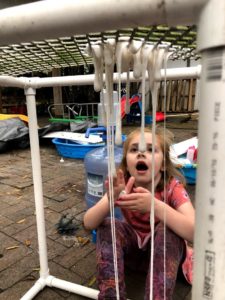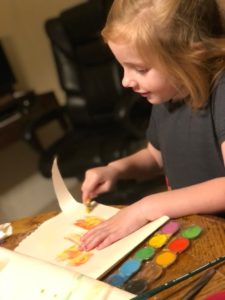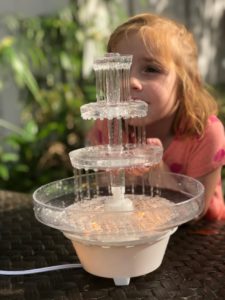Schools throughout the country are closed. Kids are home with their family. And all of a sudden, my Facebook feed is filled with parents asking for help, seeking activity ideas for their bored, stressed children. There are usually some wonderful suggestions – links to online resources, and suggestions of great activities like cooking together, play dough, and finger painting. These are all excellent suggestions, but I’ve found myself wondering if that’s really what those harried parents are looking for.

Because here’s what happens. Parents find a fantastic idea on Facebook, Pinterest, etc. They gather all the materials needed (purchasing materials at the store in some cases), and set up the activity as per directions. Then, they summon their child, and introduce the activity. This is when things go sour. Perhaps the child rejects the activity entirely. Perhaps the child engages for 5 or 10 minutes, and then wanders off to do something else. Spending a lot of time and resources on planning out and prepping for an activity that a child spends less than 10 minutes on is discouraging. But what alternatives are there, when we’re all stuck at home and everything is closed? Back to the internet for a new, better idea.

Here’s the problem: For any kids’ activity to be a success there is one absolutely critical ingredient. Buy in. The kid has to be interested. And for the vast majority of structured activities I’ve planned in my career in child care and education, that ingredient was missing. The activity flopped. More time, energy and resources poured right down the drain.

So here’s what I’ve learned. The best way to make a kids’ activity work, is to make the activity seem like their idea. Even the best, most brilliant, well-thought out lesson plan will almost always flop if the kids feel pushed into it. Now, unstructured free play with open-ended materials is the absolute best scenario. Kids engaging in true free play are learning at a pace that no structured activity can compete with. If your kids are happy to play, please let them. But the jump from a structured school schedule to days of nothing but free play is too big of a leap for most children. Play alone is not the answer. Structured activities are likely to flop. This is where strewing comes in.

Strewing is a magic trick most often used by homeschoolers and unschoolers. Strewing simply means leaving learning materials, activities or toys around the house for kids to find. Instead of setting your child up to do a particular activity, you place items in a way that suggest the activity, but allow the child to get there on his own. Let’s say you’d like to try a play dough activity. A structured play dough activity looks like this: Mom sets up play dough, sets child up at the table and encourages child to play with the play dough, perhaps providing specific direction or guidance. A strewing activity is similar but with one important difference. Mom sets out the play dough, but says nothing about it to the child at all. Eventually, the child comes across the play dough, and says “Hey mom, can I play play dough?” Mom expresses her enthusiasm about this awesome play dough idea. In the strewing scenario, mom has achieved buy-in, and the child will generally engage in the activity for far longer and with more enthusiasm.
I strongly encourage you to try this. Here’s some suggestions to get you started:
Use different places in your house. Place some interesting art supplies, games, puzzles or toys in the living room, kitchen counter, or dining room table. Then just wait and see what your child expresses an interest in. Your child will engage in some of the items you’ve strewn, and ignore others. That’s great! Watching what they’re interested in provides great info on what to try setting out next.
Set things out in unconventional places. If there’s a toy or activity in your child’s bedroom that they haven’t played with in a while, move it to a different room. Just place it on the floor in the living room or on the table, and see if it sparks an interest. The simple act of moving a toy or activity to a new location can rekindle interest and play.
Follow your child’s interests. The internet is a fantastic source of resources, but the very best source of activity ideas for your child is your child. Set up activities that match their interests.
Say yes. In many cases, your child will see the materials set out, and have a different activity idea using those materials than the one you had in mind. Unless there’s a real, practical reason to say no, say yes! Perhaps they want to paint their legos. Cool! Washing them can be a whole other activity. Perhaps they want to construct things out of their paintbrushes. Why not? If there’s a reason they shouldn’t, then explain what that is. Otherwise, say ‘yes’ as often as possible to your child’s creative activity ideas!
If you’re not sure what to put out when you try strewing, the internet is full of ideas. Homeschool moms love to share their successful strewing set ups. That being said, there is generally no reason to buy anything new. Materials you have around the house can be combined and recombined into countless different activities. And your child is equipped with near infinite creativity. Once you begin finding ways to unleash that creativity and embrace your child’s unique ideas, the problem of what to do with your child on these long days will begin to solve itself.

